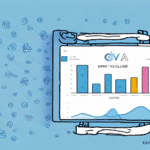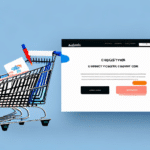A Guide to Boosting Cart Conversion by Adding a Promise Date
In the competitive world of e-commerce, ensuring that customers have a seamless and satisfying shopping experience is paramount. One of the most critical stages in this journey is the checkout process. Cart abandonment is a prevalent issue that can lead to significant losses in potential sales and revenue. One effective strategy to combat this is by adding a promise date to your e-commerce site. This article explores the importance of promise dates, how they can enhance your cart conversion rate, and provides actionable tips for implementing them effectively.
Why Promise Dates Are Important for E-commerce Sites
A promise date is a guaranteed date by which customers can expect to receive their ordered products. It instills a sense of security, reassuring customers that their items will arrive on time, allowing them to plan accordingly. This reliability helps build trust with customers, which is crucial for retention and loyalty. Moreover, offering a promise date can provide a competitive advantage, distinguishing your e-commerce site from others that may not offer this assurance.
Building Customer Trust
Trust is a cornerstone of successful e-commerce. By providing a clear and reliable delivery date, you demonstrate transparency and commitment to customer satisfaction. This trust fosters long-term relationships, encouraging repeat business and positive word-of-mouth referrals.
Enhancing Inventory and Shipping Management
Implementing promise dates allows e-commerce businesses to manage their inventory and shipping processes more efficiently. By committing to specific delivery timelines, businesses can better plan and allocate resources, minimizing the risks of overstocking or understocking products. This efficiency can lead to cost savings and improved profitability.
How Promise Dates Can Improve Your Cart Conversion Rate
Incorporating promise dates can significantly impact your cart conversion rate by reducing cart abandonment. According to a Baymard Institute study, the average cart abandonment rate is around 69.57%. Providing a promise date adds a layer of urgency and reliability, encouraging customers to complete their purchases.
Reducing Cart Abandonment
When customers are presented with a guaranteed delivery timeframe, they are more likely to proceed with their purchase, knowing exactly when to expect their order. This clarity reduces uncertainty and the temptation to abandon the cart in search of faster or more reliable alternatives.
Enhancing Customer Experience
A positive checkout experience, reinforced by a clear promise date, increases the likelihood of repeat purchases. Satisfied customers are not only more inclined to return but also to recommend your site to others, further boosting conversion rates.
Understanding the Psychology Behind Promise Dates and Cart Conversions
The effectiveness of promise dates is deeply rooted in psychological principles such as scarcity and urgency. When customers perceive that the availability of products may be limited or that timely delivery is assured, they are more motivated to complete their purchases promptly.
Scarcity and Urgency
The promise date creates a sense of urgency, encouraging customers to act quickly to secure their desired products. This psychological push can lead to higher conversion rates as customers strive to avoid missing out on favorable conditions.
Managing Expectations
While promise dates can drive conversions, it's essential to meet these commitments consistently. Failing to deliver on promised dates can lead to frustration, negative reviews, and a loss of trust, undermining your brand's reputation.
Tips for Choosing the Right Promise Date for Your E-commerce Site
Selecting an appropriate promise date involves several considerations to ensure it aligns with your operational capabilities and customer expectations.
Assessing Supply Chain and Shipping Times
Evaluate your supply chain processes to determine realistic shipping times. Avoid over-promising by ensuring that the delivery dates you provide are achievable, thereby maintaining reliability and trust.
Understanding Customer Expectations
Different customer segments may have varying priorities regarding shipping speed. Conduct surveys or analyze purchase data to understand your customers' preferences and tailor your promise dates accordingly.
Analyzing Competitor Offerings
Research your competitors to understand the promise dates they offer. Strive to provide competitive or superior delivery guarantees to attract and retain customers in a crowded marketplace.
Considering Product Types
The nature of your products can influence appropriate promise dates. Perishable or time-sensitive items may require shorter delivery windows, whereas non-perishables can accommodate longer promise dates without compromising customer satisfaction.
Clear Communication
Ensure that your promise dates are prominently displayed throughout the shopping experience, including product pages, the checkout process, and order confirmations. Transparency in communication helps manage customer expectations effectively.
What to Consider When Setting Realistic Promise Dates for Shipping and Delivery
Setting realistic promise dates is crucial to maintaining customer trust and avoiding potential dissatisfaction.
Shipping and Fulfillment Times
Account for all phases of order processing, including packaging, handling, and actual shipping durations. Incorporate buffers to accommodate unforeseen delays, ensuring that the delivery dates remain reliable.
Customer Location
Consider the geographical distribution of your customer base. Delivery times can vary significantly based on distance and regional logistics capabilities, so tailor your promise dates accordingly.
Contingency Planning
Prepare for unexpected events such as extreme weather, natural disasters, or supply chain disruptions by having contingency plans in place. Proactively communicate any delays to customers to maintain transparency and trust.
How to Communicate Promise Dates Effectively to Your Customers
Effective communication of promise dates is essential to their success in boosting cart conversions.
Prominent Display
Ensure that promise dates are clearly visible on product pages, during the checkout process, and in order confirmation emails. Highlighting this information reassures customers and reinforces their purchasing decision.
Regular Updates
Keep customers informed about the status of their orders through automated emails or SMS notifications. Providing tracking information allows customers to monitor their shipments, enhancing their overall experience.
Handling Delays Transparently
In cases where delays occur, communicate promptly and offer solutions such as expedited shipping or discounts on future purchases. Transparent handling of delays can mitigate negative impacts and preserve customer trust.
The Impact of Transparent Communication on Cart Conversion Rates
Transparency in communication plays a pivotal role in building trust and improving cart conversion rates.
Building Trust Through Honesty
When customers feel well-informed about their orders, including any potential delays or issues, they are more likely to trust your brand. This trust translates into higher conversion rates and increased customer loyalty.
Reducing Uncertainty
Clear and honest communication eliminates uncertainties that can lead to cart abandonment. By keeping customers informed, you reduce anxiety and enhance their confidence in completing their purchases.
Using Promise Dates to Build Customer Trust and Loyalty
Implementing promise dates effectively can significantly contribute to building long-term customer trust and loyalty.
Consistent Delivery Performance
Consistently meeting or exceeding promised delivery dates reinforces customer trust. Reliability in fulfillment creates positive customer experiences, fostering loyalty and repeat business.
Enhanced Customer Satisfaction
Customers value timely deliveries. Meeting their expectations enhances satisfaction, making them more likely to return and recommend your store to others.
Case Studies: Companies That Successfully Boosted Cart Conversions with Promise Dates
Several leading companies have effectively utilized promise dates to enhance their cart conversion rates.
Amazon Prime
Amazon's Prime service offers a promise of two-day shipping on eligible items. This guarantee has been instrumental in increasing customer satisfaction and loyalty, contributing to higher cart conversion rates.
Target RedCard
Target offers free two-day shipping for RedCard holders, providing a clear promise date for deliveries. This incentive not only boosts conversions but also encourages customers to use their RedCard for additional benefits.
The Role of Technology in Managing Promise Dates and Improving Cart Conversion Rates
Advancements in technology have streamlined the management of promise dates, enhancing their effectiveness in improving cart conversion rates.
Order Management Systems
Modern order management systems track and update customers on the status of their orders in real-time. This capability ensures accurate promise dates and timely communication, enhancing the customer experience.
Shipping Carrier Integration
Integrating with shipping carriers allows for real-time tracking updates and automated delivery notifications. This integration provides customers with visibility into their shipments, reinforcing the reliability of promise dates.
Best Practices for Implementing Promise Dates on Your E-commerce Site
To maximize the benefits of promise dates, adhere to the following best practices:
- Realistic Commitments: Ensure that your promise dates are achievable to maintain reliability.
- Clear Communication: Prominently display promise dates throughout the shopping experience.
- Transparency: Communicate any potential delays promptly and offer solutions.
- Leverage Technology: Utilize order management and shipping integrations to manage promise dates effectively.
Measuring the Success of Your Promise Date Strategy with Data Analytics
Utilizing data analytics is essential to evaluate the effectiveness of your promise date strategy.
Key Metrics to Monitor
- Cart Abandonment Rates: Track changes in cart abandonment to assess the impact of promise dates.
- Average Order Value: Monitor any shifts in the average order value as a result of enhanced purchase confidence.
- Customer Feedback: Analyze reviews and feedback to gauge customer satisfaction with your promise date offerings.
Continuous Improvement
Use the insights gained from data analytics to refine your promise date strategy. Adjust delivery timelines, communication methods, and fulfillment processes based on performance metrics and customer feedback.
Common Mistakes to Avoid When Using Promise Dates to Boost Cart Conversions
While promise dates can be highly effective, avoiding common pitfalls is crucial to their success.
Over-Promising and Under-Delivering
Making unrealistic delivery promises can lead to customer disappointment and erode trust. Always ensure that your promise dates are based on reliable data and operational capacity.
Poor Communication of Delays
Failing to inform customers about delays can result in frustration and negative reviews. Maintain transparent communication to manage expectations effectively.
Lack of Clear Explanation
Not providing sufficient information about how promise dates are determined can leave customers confused. Offer clear explanations to help customers understand the delivery timeline.
Future Trends in E-commerce and the Role of Promise Dates in Improving Customer Experience
The e-commerce landscape is continually evolving, and promise dates will remain a pivotal element in enhancing customer experience.
Rise of Same-Day and Next-Day Deliveries
As logistics and supply chain technologies advance, same-day and next-day delivery options are becoming more prevalent. Promise dates will adapt to these trends, offering even faster delivery assurances.
Personalized Delivery Options
Future promise date strategies may incorporate personalized delivery options based on customer preferences, further enhancing the shopping experience and boosting conversion rates.
Sustainability Considerations
With increasing emphasis on sustainability, promise dates will also need to balance speed with environmentally friendly shipping practices, meeting customer expectations for both reliability and responsibility.
Conclusion
Incorporating a promise date into your e-commerce strategy can significantly enhance your cart conversion rates and build lasting customer trust and loyalty. By understanding the underlying principles of promise dates, selecting appropriate delivery timelines, communicating effectively, and leveraging technology, you can provide a superior shopping experience. Additionally, measuring the success of your strategy and avoiding common mistakes will help you maintain a competitive edge in the dynamic e-commerce landscape.




















